Company: Walmart Inc.
CEO: Doug McMillon
Year founded: 1951
Headquarter: Bentonville, Arkansas, USA
Number of Employees : 2.1 Million
Type: Public
Ticker Symbol: WMT
Market Cap (Apr 2025): $731.06 Billion
Annual Revenue (FY2025): $681 Billion
Profit | Net Income (FY2025): $19.4 Billion
Products & Services: Groceries | Apparel & Accessories | Furniture | Home Appliances | Electronics | Home Goods | Cosmetics | Baby Care Products | Health & Wellness
Competitors: Amazon | Target | Costco | Etsy | Alibaba | Best Buy | eBay | Rakuten | Home Depot | TikTok Shop | Dollar Tree | BJ’s Wholesale Club | Kroger | CVS Health | Walgreens
Fun Fact:
Did you know? Walmart serves around 270 million customers and members weekly.
Walmart is a people-led, tech-powered omnichannel retailer founded by Sam and Bud Walton. The company operates 10,750 stores and several eCommerce sites in 19 countries, serving around 270 million customers and members weekly. Walmart’s marketing strategy differentiates the retailer from competitors, driving sustainable growth and long-term success. In FY2025, Walmart generated $681 billion in annual revenue, up 5.1% from FY2024. Its net income increased by 25% to $19.4 billion. [1]
Image Source: Bullfincher.io
To understand why Walmart is so successful, here is an in-depth analysis of its marketing strategy:
Walmart’s Target Market Overview
Walmart targets consumers across the market, from low-income to middle-class households. Its customers include value-conscious shoppers who prioritize low prices and good deals. The retailer also serves families looking for groceries, household essentials, and clothing. Online shoppers seeking convenience and home delivery options rely on the Walmart Marketplace. As of Jan 2025, Walmart Marketplace had over 150,000 sellers and attracted over 120 million unique monthly visitors. Walmart is the popular shopping destination for 37% of US consumers. [2]
Walmart’s target market includes small business owners looking for affordable supplies and equipment. Its stores offer a wide product variety, perfect for buyers seeking to shop in one location rather than visiting multiple outlets. In Mar 2023, Walmart unveiled its next-gen supply chain and growth strategy. It leverages a state-of-the-art distribution network to deliver a leading omnichannel experience globally. “We are in a unique position to serve our customers and members however they want to shop, which will fuel continued growth,” said CEO Doug McMillon. [3]
Image Credit: Marques Thomas
Walmart’s Positioning
Walmart’s positioning strategy creates a unique and distinct place for its products in target consumers’ minds, differentiating it from competitors. The company crafts a reputation and message that resonates with its ideal audience and communicates why it is the best choice. For example, Walmart is positioned as a retailer that helps customers save money and live better. It implements this strategy by offering affordable prices on everyday essentials and products anytime and anywhere. “Across categories, we’re providing low prices and winning customer consideration,” said CFO John David Rainey. [4]
Walmart understands its target audience and tailors its marketing strategy to address their needs and shopping behaviors. The company refines its approach to align with ever-evolving consumer demands and preferences. In Jan 2025, Walmart refreshed its brand to reflect its evolution as a people-led, tech-powered omnichannel retailer. The refresh extends Walmart’s positioning and commitment from providing affordable products to serving customers and members with the best shopping experience. “Walmart aims to be an inspirational, digital retailer that provides all the products, brands, and services our customers need and want,” said William White, senior VP and CMO of Walmart US. [5]
Checkout: Largest Global Discount Stores Companies by Market Cap
Walmart’s Value Proposition
Walmart is committed to maximizing customer value. It achieves this goal by combining strategies. First, Walmart uses the “Every Day Low Prices” (EDLP) approach across product categories. This strategy guarantees affordability. Second, it offers a wide array of products under one roof. Its inventory caters to various consumer needs and tastes. Third, customers can rely on Walmart’s expansive retail network and online presence to shop when and where they choose. These channels offer convenience and flexibility. [6]
Walmart enhances its value proposition by prioritizing operational efficiency, streamlining inventory management, and building a robust supply chain. This strategy creates value for all stakeholders, including customers and shareholders. In Apr 2025, Walmart unveiled its new business strategy at the Investment Community Meeting. “Our customers want four things: everyday low prices, a broad assortment, a convenient and enjoyable shopping experience, and to do business with a company they trust. We’re changing to serve them even better,” said CEO Doug McMillon.
Walmart’s 2025 business strategy focuses on driving growth and creating shareholder value. Since its Apr 2023 investor meeting, Walmart has expanded its US marketplace, launched marketplaces in several global markets, and introduced over 30,000 lower-priced items through its rollback program. These investments enhance Walmart’s value proposition. [7]
Walmart’s Marketing Mix (4Ps)
Walmart’s marketing mix, or the 4Ps, focuses on product, price, place, and promotion. This fundamental framework helps the company develop and execute its marketing strategy. Each component shapes Walmart’s marketing approach. How does Walmart implement the 4Ps?
1. Walmart’s Pricing Strategy
Walmart strives to provide its customers with low-priced products. As the world’s largest retailer, Walmart leverages its scale and purchasing power to negotiate favorable deals with suppliers, delivering competitive pricing. Walmart’s pricing strategy is driven by its EDLP (Everyday Low Prices) model, based on the idea that customers prefer to buy items at low prices rather than wait for special offers or sales. It attracts price-sensitive consumers and builds customer loyalty. [8]
Another component of Walmart’s pricing strategy is the rollback program. Rollback pricing offers temporary discounts on select items during peak seasons, such as back-to-school and the holidays. For example, in Jul 2024, Walmart retooled its 30-year-old No Boundaries brand for back-to-school to cater to teenagers and Gen-Zs. The relaunch includes a new 130-piece fall collection with stylish, affordable, and sustainable products. Most items cost $15 or less. Walmart marketed the revamped brand on TikTok, YouTube, Pinterest, and the online gaming site Roblox to reach young adults. [9]
Walmart’s rollback pricing strategy creates a sense of urgency, pressuring customers to capitalize on offers before they expire. The company uses price matching in-store and online to position itself as an affordable retailer. Customers can also leverage Walmart’s giveaways, coupons, and exclusive deals to maximize their value for money. For example, in 2025, the retailer hosted its Walmart+ Week from Apr 28 to May 4. This members-only, weeklong event celebrates loyal and new members with exclusive rewards and offers. [10]
2. Walmart’s Product Strategy
Walmart’s product strategy is driven by a commitment to offering a diverse range of goods across categories. Its inventory has several segments, including grocery, health and wellness, electronics, clothing, and home goods. In Jul 2024, Walmart launched the Bettergoods label, its largest store-label food brand in 20 years. It plans to add 300 products under Bettergoods, including frozen foods, coffee, and chocolate. These items can entice younger customers who aren’t loyal to grocery brands. [11]
Walmart differentiates itself from rivals by emphasizing product quality and affordability. Another component of Walmart’s strategy is its focus on product innovation and expansion. In Mar 2025, the company added four brands to its third beauty accelerator program, Walmart Start, expanding its premium beauty options. Over 10 startups have advanced from the accelerator program to Walmart stores and online channels. The retailer added over 60 brands to its premium beauty assortment within a year. [12]
3. Walmart’s Place (Point of Sale) Strategy
Walmart’s marketing mix includes a comprehensive point-of-sale (POS) strategy. Its 10,500+ stores and online channels across 19 countries are supported by a robust supply chain and distribution network. In Apr 2025, Walmart leveraged advanced geospatial tech to redefine how it maps delivery areas. The move expanded Walmart’s reach, bringing the convenience of its delivery service to 12 million more US households. Walmart’s data-driven delivery approach strengthens its point-of-sale strategy by delivering products fast and reliably to more doorsteps.
Walmart invests in innovation to enhance delivery capabilities to meet customers where they are. For example, the retailer leveraged AI to predict demand and optimize inventory. It integrated automation into its fulfillment centers to boost speed and efficiency. These tech-driven solutions ensure customers get their orders when and where they need them. [13]
Walmart Marketplace is one of the world’s fastest-growing eCommerce platforms. The retail giant invests in capabilities and solutions to fuel seller success and offer customers access to their favorite products. In Aug 2024, Walmart unveiled new features, category expansion, and multichannel fulfillment to simplify selling across markets. The company introduced Resold at Walmart, the Collector shop, Multichannel Solutions, Deals Dashboard, Walmart Cross Border, and premium beauty. It connected Marketplace tire sellers with its Auto Care Centers at 2,300 supercenters and launched Walmart LocalFinds for product discovery. These offerings bridge the gap between online and offline shopping, enhancing convenience. [14]
4. Walmart’s Promotion
Walmart’s marketing strategies include personalized promotions and targeted advertising. Walmart Rewards and Walmart+ subscription service provide benefits and exclusive offers to promote customer loyalty and encourage frequent purchases. The retailer increases promotional initiatives during the holidays to capitalize on high demand. In Mar 2025, Walmart launched its Easter 2025 promotion campaign. The company uses its yearly Easter promotional meal kit to promote must-have ingredients for a holiday feast while helping customers increase savings. [15]
Walmart’s Promotional Strategy
Walmart’s promotional strategy combines tech-driven and traditional tactics to market the brand’s products. For example, Walmart analyzes customer data and shopping patterns. Then, the retailer tailors its promotions and communications to match customers’ unique needs and preferences. It also offers promo codes to help customers save money on necessities and big-ticket items. For example, Walmart’s Apr 2025 promo codes provided 70% savings on top-tier brands like Samsung, Apple, Bissell, and Lego. Customers saved 25% on refurbished iPads and Apple Watches via Walmart Restored, 60% on Samsung TVs, and 70% on Walmart’s Spring Rollbacks. [16]
Walmart leverages social media channels to present promotional offerings and unique deals. The company runs promotional campaigns across Facebook, X, YouTube and Instagram to reach its target audience. Its digital marketing strategies use search engine optimization (SEO) to improve online visibility and increase brand awareness.
Walmart tailors its promotional campaigns for domestic and international markets to address diverse consumer needs. For example, Walmart’s US-only May Sweepstakes commenced in Feb 2025. This Sweepstakes is open to legal residents of 50 US states, DC, and Puerto Rico. Eligible American consumers can participate in this promotion to win Walmart gift cards worth $100-$1,000. [17]
Another component of Walmart’s promotional strategy is seasonal deals. The company offers discounts on special days, such as Mother’s Day, Father’s Day, Black Friday, and Cyber Monday. These campaigns enhance customer loyalty. In Mar 2025, Walmart announced its Super Savings Week. Shoppers enjoyed discounts on leading brands like Apple, VIZIO, and Charbroil through the Walmart app and website. [18]
Image Credit: Tara Clark
Walmart’s Customer Acquisition and Retention
Walmart combines several marketing strategies to attract and retain customers. The company started with Sam Walton’s dream of the best customer-focused retail experience and low-priced goods. Walton’s marketing strategy focused on attracting and retaining customers by offering low prices. In 1975, Walton visited a Korean tennis ball manufacturer with a unique ritual that ensured employees were enthusiastic and happy. He loved the idea and adopted it as Walmart Cheer. Walmart’s staff performs this ritual daily before they open stores. It unites all employees, ensuring they deliver the best service. Walmart Cheer enhances the brand’s marketing strategy and boosts customer retention. [19]
Walmart acquires and retains eco-conscious customers by tailoring its marketing messages to highlight its sustainability initiatives. The company has increased its sustainable products and services in recent years. For example, in Aug 2023, Walmart opened a new green hydrogen plant at its Quilicura Distribution Center in Santiago, Chile. The project will help Walmart Chile achieve its net-zero emissions goal. The retailer introduced Resold at Walmart in 2024, its first digital pre-owned destination with 5 million products from over 1,700 sellers. It also sells refurbished electronics and appliances via Walmart Restored. These offerings attract and retain eco-conscious customers. [20]
Walmart uses big data analytics to boost customer acquisition and retention. The company applies this strategy in two steps. First, the retail giant leverages big data analytics to identify granular customer segments based on demographic characteristics, consumer behavior, and personal preferences. Then, it uses the insight to personalize its marketing communications, offerings, and solutions for each customer segment, increasing engagement and conversion rates. This data-driven approach allows Walmart to optimize inventory management, pricing strategies, and promotional campaigns to meet customer demand. It helps the company boost customer satisfaction, increasing its retention rates. [21]
Image Source: Bullfincher.io
Walmart’s Marketing Goals (KPIs)
Walmart’s marketing goals include boosting sales, improving brand reputation, promoting sustainability, and strengthening supplier relationships. The retail giant uses key performance indicators (KPIs) to assess its progress toward these goals. Sales revenue, gross profit margin, net income, and same-store sales growth visualize its financial performance. The company’s marketing strategy and omnichannel approach are paying off. In Q4 FY2025, Walmart’s US Marketplace grew 34% and achieved its highest-ever sales day and conversion rate during the holidays. It has delivered double-digit growth in eleven quarters. The company generates over $100 billion in global eCommerce sales. [22]
Walmart has a comprehensive strategy to achieve its marketing goals. It aims to increase its market share by accelerating global expansion and growing its customer base. The company runs marketing campaigns to enhance awareness, highlight its value proposition, and appeal to customers. For example, Walmart uses targeted advertising, search engine optimization (SEO), and partnerships with popular eCommerce platforms to drive online sales. It hosts supplier conferences to showcase its products and creates collaborative platforms to forge beneficial partnerships with suppliers. Walmart’s marketing campaigns reinforce brand attributes like affordability, quality, and community engagement, enhancing customer loyalty. [23]
Another of Walmart’s marketing goals is to outperform competitors. Amazon dominates online retail, making it Walmart’s top rival. In FY2023, Amazon’s yearly revenue was $575 billion versus Walmart’s $648 billion. Amazon’s 2018–2023 cumulative annual growth rate (CAGR) was 20%, outpacing Walmart’s 5% growth. Its net income rose to $51 billion with an 8% profit margin in FY2024. In comparison, Walmart’s net income was $16 billion, with a 2% margin in FY2024. These stats indicate that Amazon’s marketing strategy is more effective than Walmart’s. [24]
Walmart aims to satisfy customers. It achieves this goal by offering high-quality, affordable products and showcasing its success stories through marketing campaigns. The company uses the customer satisfaction index as a KPI to analyze the effectiveness of its marketing efforts. In 2024, Walmart’s customer satisfaction index score was 73, four points below America’s average department and discount store rating. It should invest more in initiatives that improve customer-centricity and the shopping experience. [25]
References & more information
- Walmart Inc. (2025, Feb 20). Walmart reports strong revenue of 4.1%, up 5.3% in constant currency (cc), with operating income growing faster at 8.3%. Business Wire
- Edward, C. (2025, Jan 2). Key Statistics about Walmart Marketplace 2025. SPCTEK
- Walmart Inc. (2023, Apr 4). Walmart Outlines Growth Strategy, Unveils Next Generation Supply Chain at 2023 Investment Community Meeting. Walmart.com
- PYMNTS Staff (2024, Aug 15). Walmart Amps Up Digital Progress in Positioning for Second Half. PYMNTS
- Walmart Inc. (2025, Jan 13). Walmart Introduces Updated Look and Feel: A Testament to Heritage and Innovation. Walmart.com
- Cramer, A. (2024, Sep 3). Walmart’s Everyday Low Price Strategy. Pricefy
- Walmart Inc. (2025, Apr 9). Walmart Showcases Business Strategy Focused on Driving Growth and Shareholder Value. Walmart.com
- Wood, R. (2023, Jan 23). How Walmart’s Pricing Strategy Has Made It A Dominant Force As The World’s Largest Retailer. Pricing Insight
- D’Innocenzio, A. (2025, Jul 17). Walmart retools its young adult clothing line in pursuit of fashion credibility. AP News
- Walmart Inc. (2025, Apr 8). Walmart+ Goes All-In With Week of Exclusive Member Benefit Savings for Walmart+ Week. Walmart.com
- Alvarez, E. (2024, Aug 15). Walmart Grows More Optimistic About 2024 as Bargains Prove a Powerful Lure for the Inflation Weary. Associated Press
- Howland, D. (2025, Mar 1). Walmart expands premium beauty options. Retail Dive
- Walmart Inc. (2025, Apr 16). Walmart’s Data-Driven Approach Expands Delivery to 12 Million More Households. Walmart.com
- Walmart Inc. (2024, Aug 27). Walmart Marketplace Accelerates Growth; Launches Category Expansion, Multichannel Solutions, and Omnichannel Innovations for Sellers. Walmart.com
- Cavale, S. (2025, Mar 26). Walmart touts cheaper Easter meal for 2025 – but it’s missing the eggs. Reuters
- Thomas, J. (2025, Apr 16). Walmart Promo Codes: Save Up To 70% On Lego, Apple And More. Forbes
- Walmart Inc. (2025, Jan 15). The 2025 Q1 Walmart February – May Sweepstakes (the “Sweepstakes”) Official Rules. Walmart.com
- Walmart Inc. (2025, Mar 21). Walmart announces Super Savings Week with Offers on top Home, Fashion, and Electronics. Walmart.com
- Alonso, T. (2022, Nov 25). How Walmart Became The Retailer Of The People. Cascade
- Walmart Inc. (2023, Aug 15). Walmart Chile creates the first industrial-use green hydrogen production plant in Latin America. Walmart.com
- Cao, P. (2024, Nov 21). Big Data in Customer Acquisition and Retention for eCommerce – Taking Walmart as an Example. Research Gate
- Joneja, M. (2025, Feb 20). Growing together: Walmart Marketplace wraps FY25 with continued momentum. Walmart Marketplace
- Pereira, D. (2025, Apr 15). Walmart’s Marketing Strategy. Business Model Analyst
- Miglani, J. (2024, Sep 5). Amazon vs. Walmart: Revenue and Profit Comparison, 2010–2024. Forrester
- Statista Research Department (2025, Jan 6). US department and discount store consumer satisfaction: Walmart 2008-2024. Statista
- Featured Image by Marques Thomas
- Aisle Image by Marques Thomas
- Kart Image by Tara Clark
Tell us what you think? Did you find this article interesting? Share your thoughts and experiences in the comments section below.

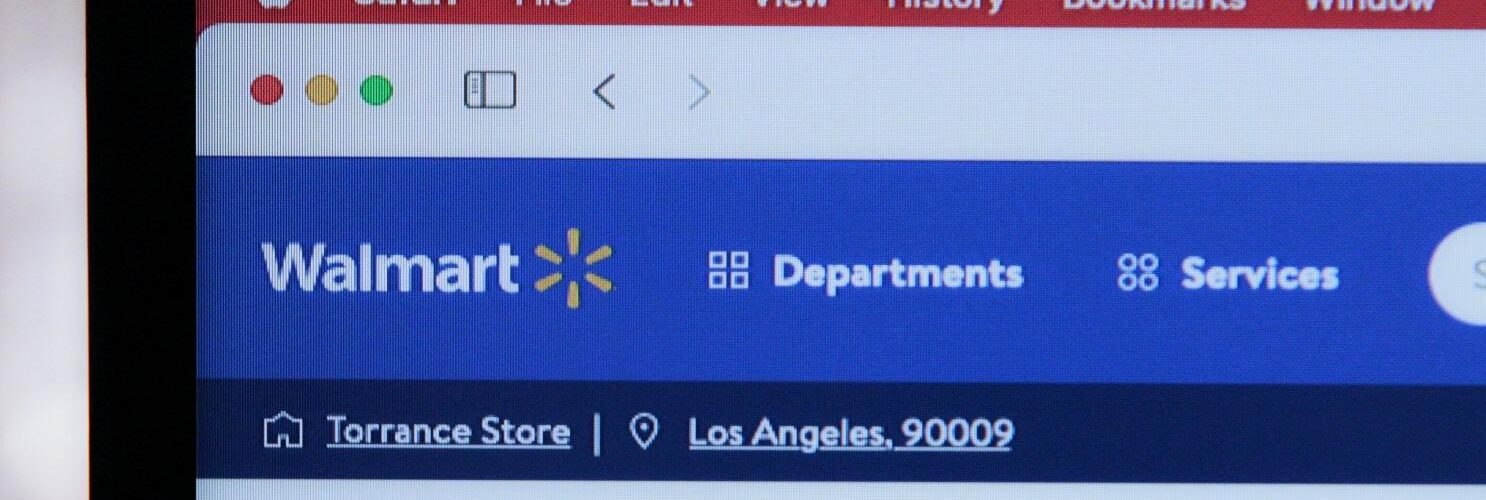
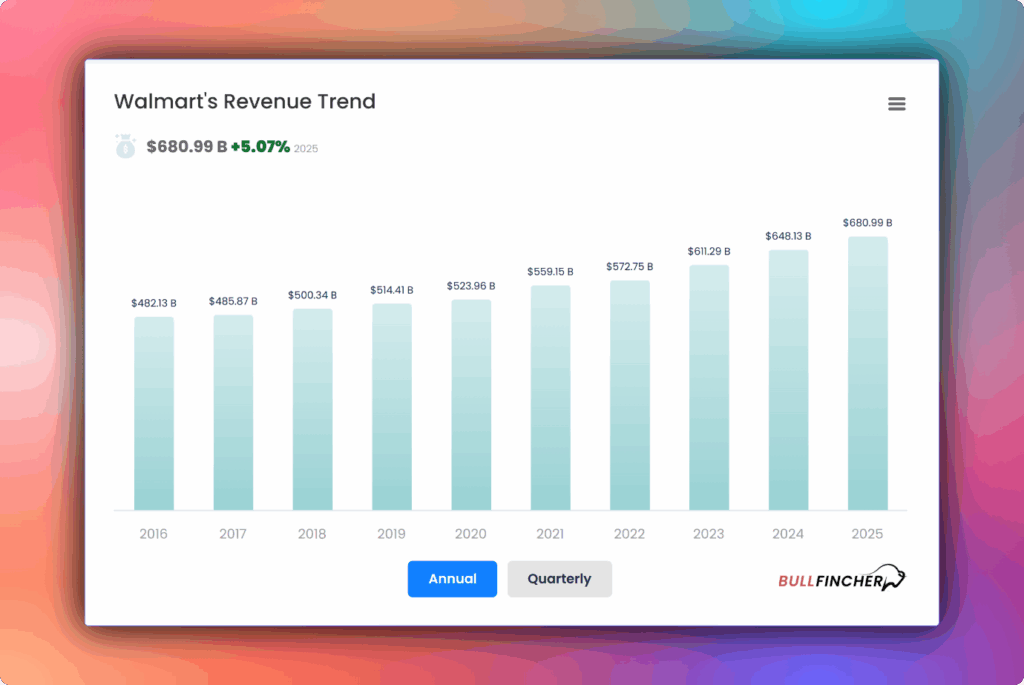
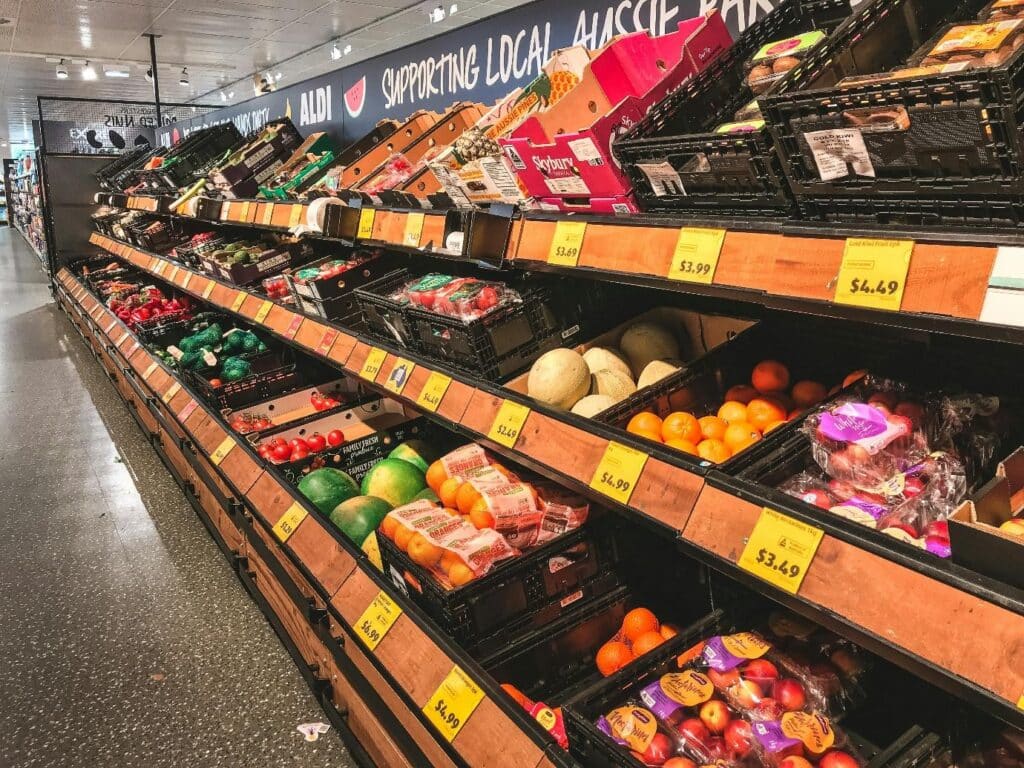
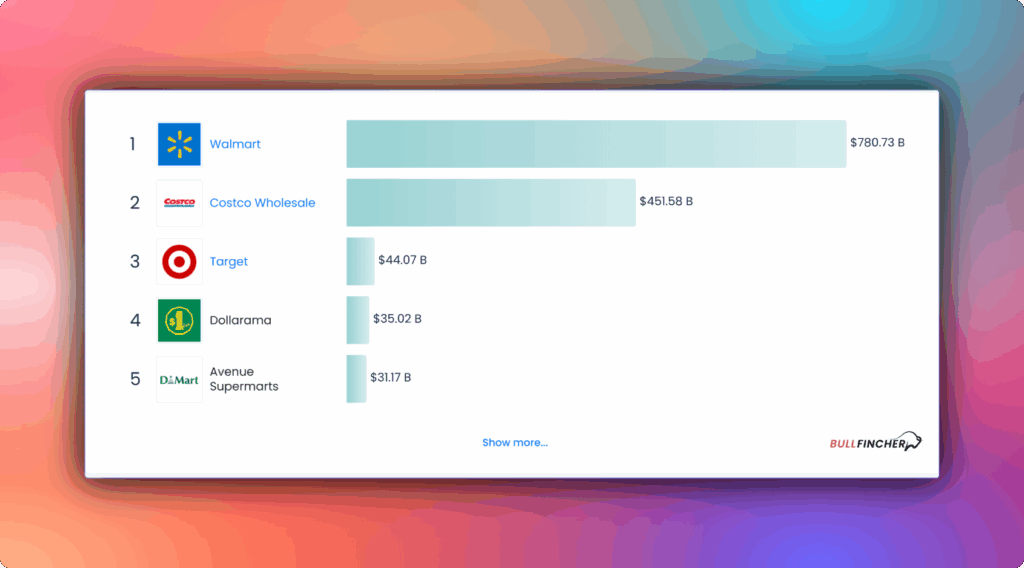

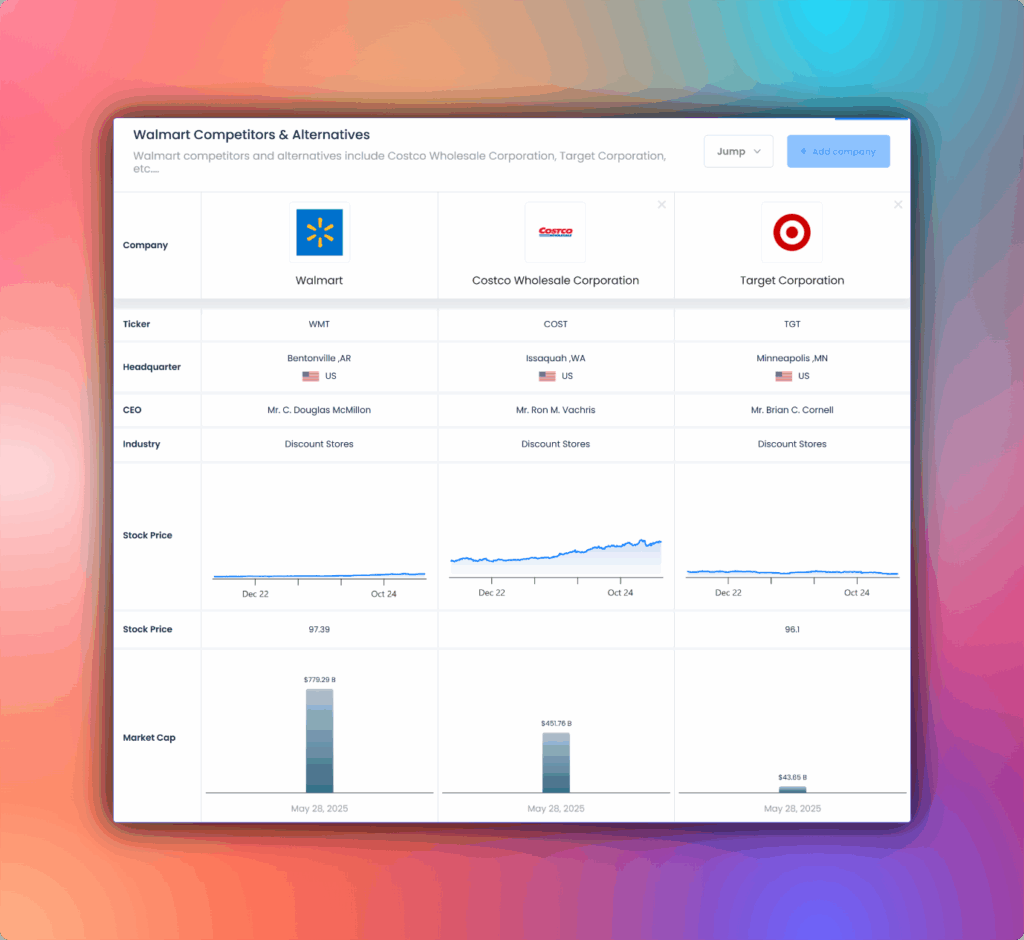










Add comment